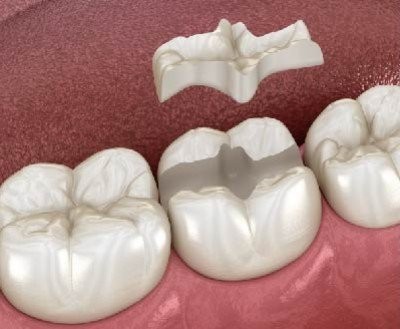

What are Inlays and Onlays?
Inlays and onlays shall refer to the aesthetic restorations performed in cases where the planned filling has the potential to break or where there is usually not enough dental tissue. There is no need to place veneers on all surfaces of the teeth. Thereby, it causes lesser material loss in the dental tissues than veneers.
What's the difference between Inlay and Onlay?
The difference between them is related to the areas they cover on the tooth. Inlays cover a lesser areas of the tooth. Onlay shall mean the filling covering one or more tubercules of the tooth (hillock).
What materials are Inlays and Onlays made of?
Metal (gold), porcelain and composites can be used. Today, porcelain and composite inlays/onlays are often preferred as they are more aesthetic.
What is the expected life of Inlay and Onlay?
Inlay and onlay remain in the mouth for many years without any deformation, however, the length of time in the mouth depends on the type of material, the position of the tooth during chewing, mastication forces, the patient's concern to what they eat and the dentist controls.
What are the advantages of Inlay and Onlay?
Microleakage in the composite applied directly (in the patient's mouth) is reduced to a minimum in the placing of inlay/onlay. The restoration thus protects the healthy dental tissue. A secondary tooth caries does not develop.
They have superior aesthetic properties. For example, porcelain inlay can remain in the mouth for many years without any decolorizationand as it is resistant to wear.
They are long-lasting.
They can bind well with teeth.
Composite inlays do not cause abrasions on the opposite teeth.
They are of easy reparability.
How are Inlays and Onlays applied?
Inlays and Onlays are usually performed in 2 sessions as it is worked with technicians. In the first session, the caries and damaged area of the tooth is removed, and the tooth is prepared for the dental restoration to place. The region of the prepared tooth and its opposite region are measured and sent to the laboratory. Color is selected. A temporary filling material is placed in the prepared cavity, afterward the tooth is closed.
In the second session, inlay/onlay coming from the technician is cemented to the prepared tooth using a special adhesive material. The closure should be adjusted after the restoration has been attached. If there is a surplus, the surplus is eliminated with the help of dental bur and polished again.